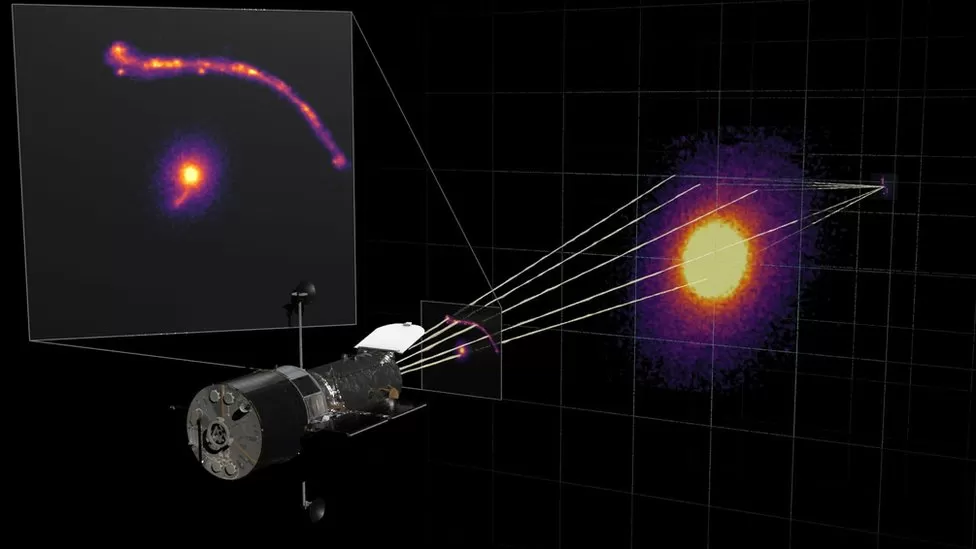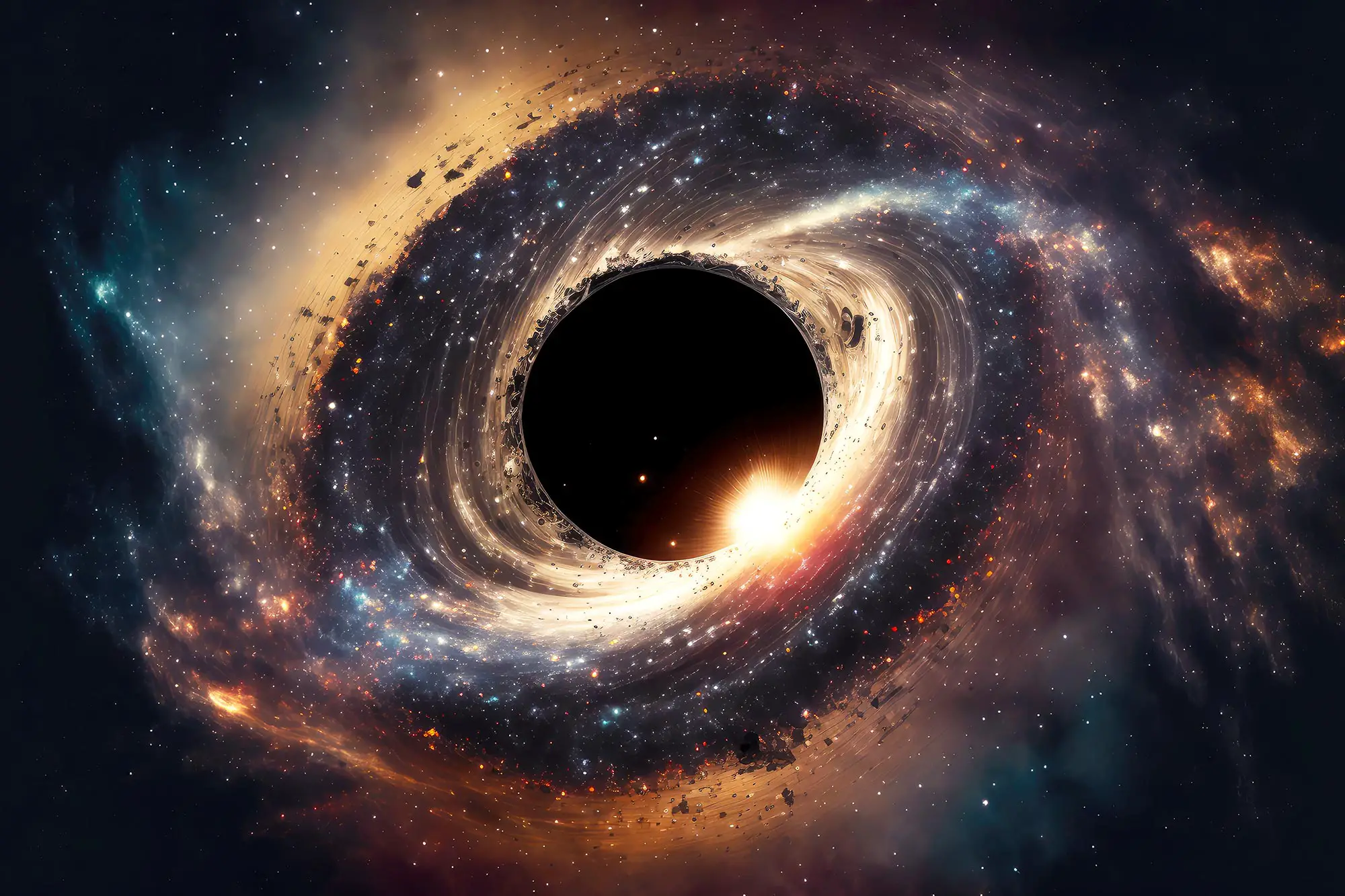Using a novel method, astronomers claim to have discovered one of the biggest black holes known to date.
Durham University researchers used gravitational lensing to study the “ultramassive” black hole’s gravitational influence on moving light.
Even the study’s director, Dr. James Nightingale, admitted that he had trouble “comprehending how big this thing is.”

DURHAM University
The Monthly Notices of the Royal Astronomical Society journal has released their results.
The black hole was the first to be detected using gravitational lensing, according to the scientists, and was 30 billion times larger than our Sun.
Even as an astronomer, Dr. Nightingale said, “I find it difficult to fathom how enormous this object is.
“The scale of this black hole would be a tiny percentage of the size of all the stars and planets in the night sky, if you added them all up and placed them in one place.
“This black hole is larger than most galaxies in the universe,” someone once said.
How do you create a black hole this large in just 13 billion years of the universe’s existence, he asked, as he added that the finding “pushes our understanding of astronomy to the limits”?
What is a black hole?
A area of space where matter has condensed in on itself is called a black hole.
Nothing can flee from the gravitational force, not even light.
When some big stars explode and die, black holes will form.
However, some are genuinely enormous and have billions of times our Sun’s mass.
It is unclear how these creatures, which are located at galaxy centers, formed.
But it is obvious that they give the galaxy energy and will affect how it evolves.
Source: NASA
Professor Alastair Edge of Durham University made the initial observation in 2004 while looking over pictures from a study of galaxies.
Extremely high-resolution images from the NASA Hubble observatory and the university’s DiRAC COSMA8 supercomputer capabilities were used in the research, which also included Germany’s Max Planck Institute, to further investigate and verify the black hole’s presence.
According to Dr. Nightingale, light “appears to be pulled towards the mass of nearby objects” as it moves through space.
He stated, “We found this very special light ray that travelled extremely close to this black hole,” adding that the distance it travelled was “roughly 40 billion times the distance of the Sun to the Earth,” which is a very tiny quantity in astronomical terms.
Gravitational lensing, according to Dr. Nightingale, “will enable us to detect many more black holes outside of our local universe and reveal how these exotic objects evolved further back in cosmic time.”

